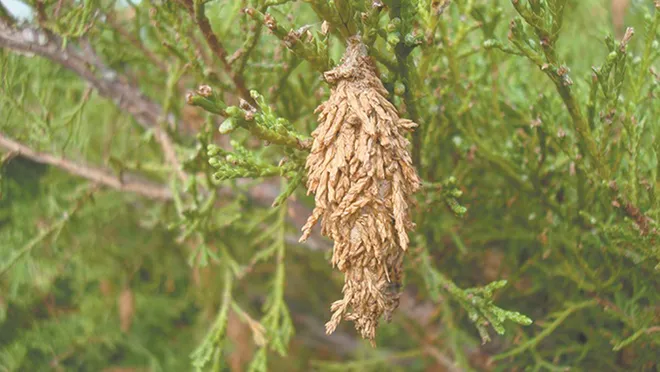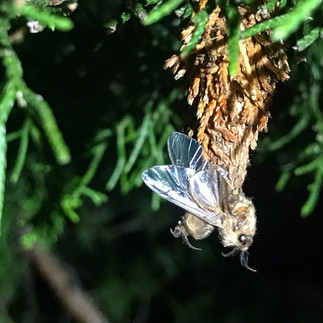Time to get Picking!
- Jordan Haas
- Sep 15
- 2 min read
How to Manage Bagworms
The bagworm season starts when eggs hatch in late May or early June and continues throughout the summer as the caterpillars feed and grow. The feeding period ends in late August or early September when the larvae mature, pupate, and stop causing damage for the year.
Bagworm activity during the season
Late May to early June: Eggs hatch, and small larvae emerge, immediately beginning to construct their protective, camouflaged bags.
June to August: Caterpillars actively feed and expand their bags, causing the most damage to trees and shrubs. As they feed, they use silk and plant material to enlarge their bags to about 1 to 2 inches in length.
Late August to September: The larvae cease feeding and securely attach their bags to a twig with a strong silk band. They then reverse their position inside the bag and begin pupation.
September to October: Male bagworms emerge as small, dark moths with wings and fly to mate. Females remain wingless inside their bags. After mating, the female lays 500 to 1,000 eggs inside her bag and dies. The egg-containing bags remain on the plant through winter. If bags are not removed, an infestation can multiply and become severe very quickly in the following year.
What to do right now
Inspection and planning
After September, it is too late for insecticides. Once the caterpillars mature and stop feeding, insecticides are no longer effective. At this stage, the only effective control method is to remove the bags by hand.
Concentrate on finding and removing any remaining bags to prevent a larger infestation the following year.
Bags should be destroyed rather than simply being dropped to the ground because eggs will still hatch from bags on the ground.
How bagworm damage weakens a tree
Defoliation: When bagworms strip a tree of its foliage, they significantly reduce its ability to photosynthesize and create food for itself. This loss of energy diverts resources away from the tree's natural defense systems.
Starvation: For evergreens like junipers and arborvitae, the damage is more severe. They do not regenerate lost foliage, and heavy defoliation can quickly lead to death. For deciduous trees, persistent or severe defoliation can deplete the tree's energy reserves.
Open wounds: The girdling caused by bagworm silk, as well as feeding on bark during severe infestations, creates open wounds. These wounds serve as entry points for pathogens and other insects.
Lastly, how to mitigate Bagworms.
1. Encourage Natural Predators:
Planting nectar-rich flowers can attract parasitic wasps and other natural predators that help control bagworm populations.
2. Plant Health:
Keep your plants healthy and stress-free, as this makes them less vulnerable to pest infestations.
3. Professional Help:
If you have a large or overwhelming infestation, contact us, our certified arborists can inspect and create a care plan for your trees.




















